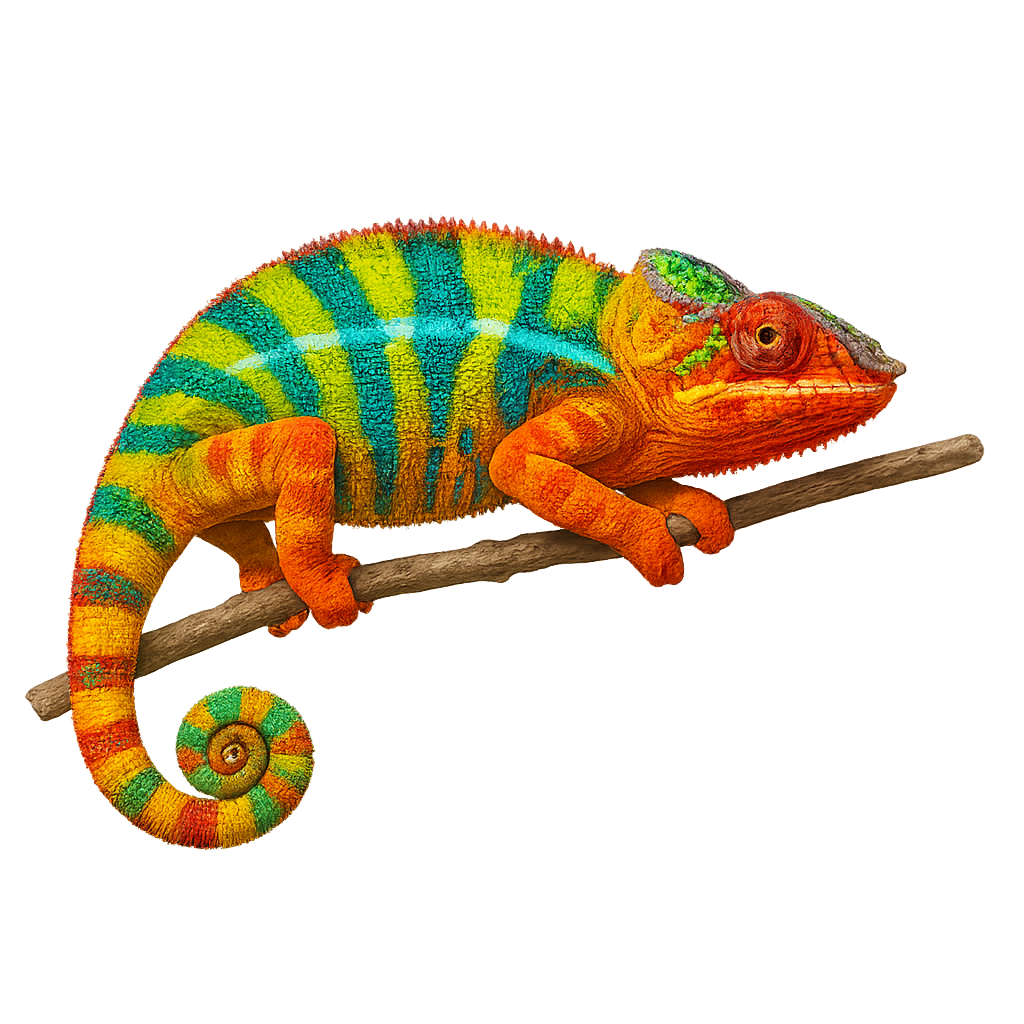Your wildlife photography guide.
Explore the panther chameleon in detail, study its behavior, prepare your shots.
Where to observe and photograph the panther chameleon in the wild
Learn where and when to spot the panther chameleon in the wild, how to identify the species based on distinctive features, and what natural environments it inhabits. The WildlifePhotographer app offers tailored photography tips that reflect the panther chameleon’s behavior, helping you capture better wildlife images. Explore the full species profile for key information including description, habitat, active periods, and approach techniques.
Panther chameleon
Scientific name: Furcifer pardalis

IUCN Status: Least Concern
Family: CHAMALEONIDAE
Group: Reptiles
Sensitivity to human approach: Somewhat shy
Minimum approach distance: 2 m
Reproduction period: April to October
Incubation: 30-35 jours
Births: April to October
Habitat:
Humid tropical forests, wooded areas, riverbanks
Activity period :
Active during the day when temperatures are favorable, often seen basking in the sun.
Identification and description:
The Panther Chameleon is an iconic species from Madagascar, famous for its vibrant colors and impressive patterns that vary depending on its mood and environment. This chameleon is primarily arboreal, living in the humid tropical forests of the island, where it hides among branches and foliage. It is also known for its ability to change color, an adaptation that helps it camouflage but is also used during fights between males or to attract a female. Although generally calm, it can become more active during the breeding season.
Recommended lens:
Macro – adjust based on distance, desired framing (portrait or habitat), and approach conditions.
Photography tips:
Photograph the Panther Chameleon in its natural habitat, using soft lighting to capture its vibrant colors without disturbing it. Use a macro lens to capture the details of its skin and unique patterns. Be patient and wait for it to move or adopt a static position, allowing you to better capture its distinctive appearance. Shooting in the wild can be particularly interesting, especially when it hides among the foliage.
The WildlifePhotographer App is coming soon!
Be the first to explore the best nature spots, track rutting seasons, log your observations, and observe more wildlife.
Already 1 449 wildlife lovers subscribed worldwide

